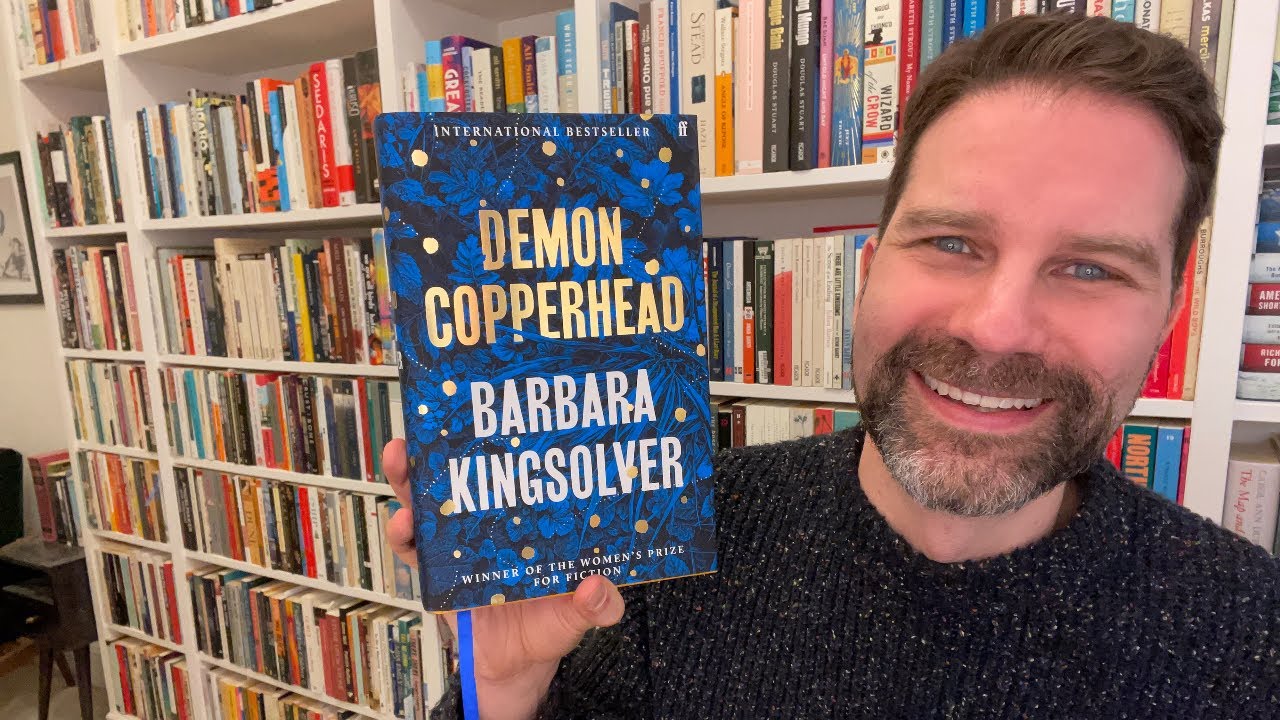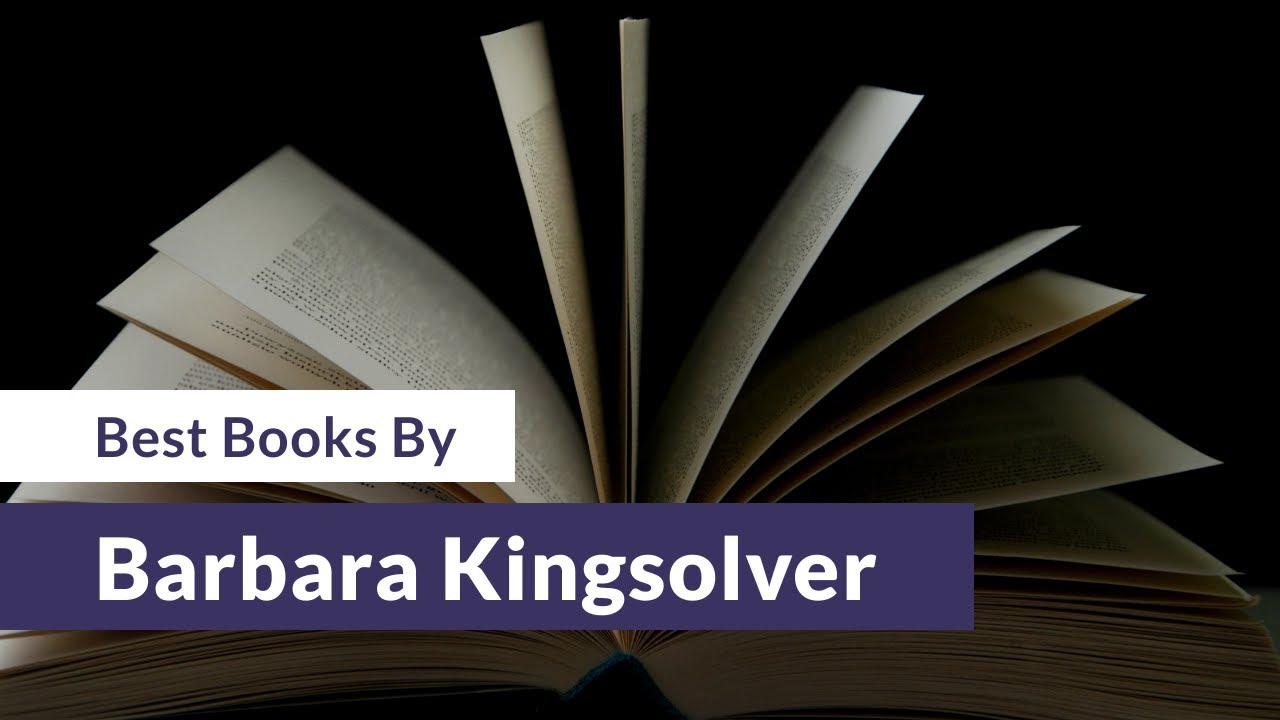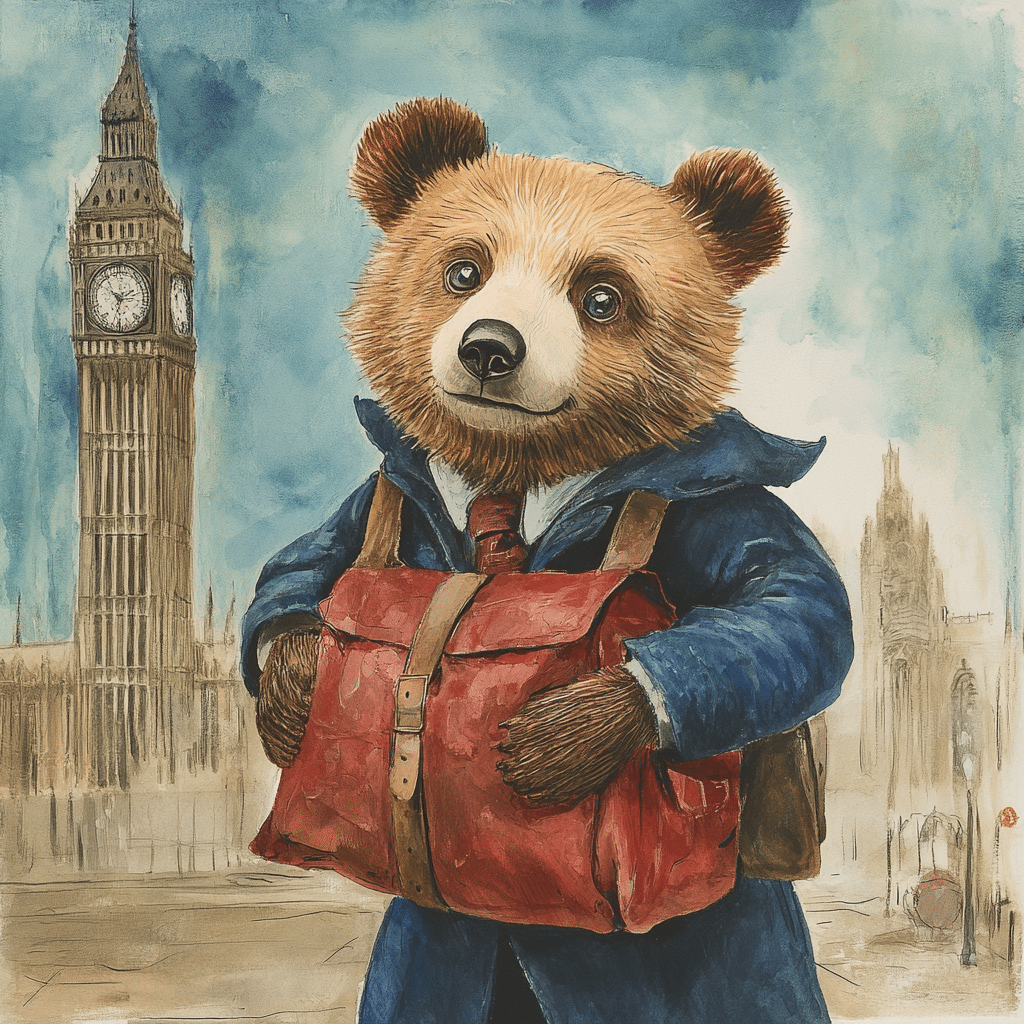Unveiling the Literary Jewels: Best Barbara Kingsolver Books Ranked
Barbara Kingsolver, a literary icon in her own right, has captivated readers with her profound storytelling, marrying socio-political narratives with rich character development. Born in 1955 in rural Kentucky, Kingsolver’s upbringing steeped in nature’s wonderment undoubtedly weaves through her prose. With a background in biology, she brings a scientific eye to the human condition, displaying a deep empathy for both her characters and the environment in which they dwell.
Her novels are not just stories; they act as mirrors reflecting societal issues, urging a compassionate look at our own nature and the societies we inhabit. Kingsolver’s characters pulsate with life, often situated at the precipice of change, challenged by their circumstances, and propelled by an innate quest for meaning. This depth in her writing has made Kingsolver’s books not just engaging narratives but vessels for vital discussion on themes from human rights to ecological preservation.
Kingsolver’s journey to fame was not an overnight affair; it was a gradual ascent marked by her undying fervor for change and a voice that refuses to echo the status quo. Her books stand testament to a writer who dares to dig beneath the surface of societal facades, unveiling truths that are as uncomfortable as they are undeniable.

Masterpieces in Prose: “The Poisonwood Bible” and Its Lasting Impact
“The Poisonwood Bible,” a Pulitzer Prize finalist in fiction, is often hailed as Kingsolver’s magnum opus. It’s a tapestry of experiences that transports readers to the heart of 1960s Congo, wherein lies a narrative that powerfully encapsulates cultural arrogance and the haunting aftermath of colonialism.
This remarkable novel tells the tale of the Price family, missionaries who descend upon the Congo with the intent to “civilize” its people. As the narrative unfolds, so do the layers of complexity within each family member, illuminating the stark contrast between intention and consequence. Kingsolver’s narrative style, a quilt woven from the distinctive perspectives of the Price women, deepens the reader’s engagement with each passing page.
Thematic arcs of guilt, redemption, and the blinding nature of faith resonate deeply. Kingsolver pushes readers to question their own beliefs and biases, making this novel linger in the mind long after the last page is turned.

| Title | Publication Year | Genre | Synopsis | Recognitions | Publisher |
|---|---|---|---|---|---|
| The Poisonwood Bible | 1998 | Historical Fiction | A tale of the Price family’s missionary trip to the Congo in 1960 and its tragic consequences. | Pulitzer Prize Finalist, Bestseller | HarperCollins |
| The Bean Trees | 1988 | Novel | The story of Taylor Greer as she journeys away from Kentucky and inherits an abandoned child. | American Library Association Notable Book | HarperCollins |
| Animal Dreams | 1990 | Novel | Codi Noline returns to her hometown to face her past and the memories of her estranged father. | Pen West Fiction Award | HarperCollins |
| Pigs in Heaven | 1993 | Novel | Sequel to The Bean Trees, following the challenges Taylor faces after adopting Turtle. | HarperCollins | |
| The Lacuna | 2009 | Historical Fiction | Follows the life of Harrison William Shepherd intertwined with famous figures from the 1930s. | Orange Prize for Fiction | HarperCollins |
| Flight Behavior | 2012 | Novel | Explores climate change through the eyes of a woman who discovers a colony of monarch butterflies. | HarperCollins | |
| Prodigal Summer | 2000 | Novel | Interconnected stories set in Appalachia about human desire, ecology, and the connections between them. | HarperCollins | |
| Small Wonder | 2002 | Essay Collection | A collection of essays reflecting on nature, family, literature, and the joys and woes of living in America post-September 11. | HarperCollins | |
| High Tide in Tucson | 1995 | Essay Collection | Essays that explore family, community, and the natural world with wit and candor. | HarperCollins | |
| Animal, Vegetable, Miracle | 2007 | Non-Fiction | Kingsolver’s family adventure of moving to a farm in Appalachia to grow and eat locally. | Northern California Book Award for Creative Nonfiction | HarperCollins |
| Unsheltered | 2018 | Novel | Parallels between a modern-day family and historical figures living in Vineland, N.J. | HarperCollins | |
| Demon Copperhead | 2022 | Novel | A modern reimagining of Charles Dickens’ “David Copperfield,” set in the Appalachian Mountains. | HarperCollins |
A Tale of Human and Avian Kinship: “The Lacuna” Dissected
In “The Lacuna,” Kingsolver presents a seamless blend of historical reality with the arresting journey of a fictional protagonist. The novel whisks us through the vast landscapes of Mexico and the United States during the fever of the 20th century, breathing life into historical figures such as Frida Kahlo and Leon Trotsky.
“The Lacuna” is more than just a voyage through history; it’s a profound commentary on political and artistic lines that, when crossed, incite both suppression and revelation. Kingsolver’s fusion of the real with the invented paints a lucid picture of the era’s social dynamics and the daunting bravery of those who defied censorship to voice their truths.

Environmental Urgency Through Fiction: Decoding “Flight Behavior”
If urgency had a color and a spectacle, “Flight Behavior” portrays it through the iridescent arrival of monarch butterflies in rural Appalachia. Kingsolver employs the natural world as a majestic backdrop, trickling into every narrative twist and emotional crescendo. Her protagonist, Dellarobia Turnbow, becomes an unwitting witness to both a biological marvel and a harsh climate reality.
Kingsolver’s portrayal of rural American life shines with authenticity, steeped in the muddy boots of hard-working individuals caught between scientific fact and ingrained faith. As Dellarobia confronts her restlessness and seeks out purpose, Kingsolver kindles a conversation on climate change that burns with topicality and a plea for recognition.

The Intimate Dance of Relationships and Resilience in “Prodigal Summer”
“Prodigal Summer” hums with the sounds of nature, a symphony interlacing three tales of connection amidst the valleys of Appalachia. Here, Kingsolver dances across the pages, choreographing a narrative of intertwined destinies and the silent resilience found in the wild.
The work mirrors the nuanced development of its characters with the seasons they endure, each cycle imbuing them with the tenacity and tenderness needed to thrive. As they navigate the fragile threads of human relationships, parallels to nature’s own syncopated rhythms emerge, offering profound reflections on our place within the larger fabric of life.
The Cradling Arms of Family and Place in “Animal Dreams”
Returning to one’s roots can be just as erratic as it is comforting, and in “Animal Dreams,” Kingsolver embroiders a story of homecoming that at once envelops and enlightens. Codi Noline, grappling with unresolved memories and a sense of displacement, seeks solace in her hometown of Grace, Arizona, where history cradles the present.
Here, the past and personal identity are entwined with the pulsating life of the community. Kingsolver, with her compassionate pen, illustrates how memories and a shared sense of belonging can bridge the crevasses of one’s fragmented self, nurturing reconciliation and understanding.
Breaking Down “The Bean Trees”: A Testament to Found Families and Survival
Kingsolver’s debut, “The Bean Trees,” blends humor and heartache as it delves into the unpredictable yet profound construct of found families. We trace the path of Taylor Greer, who steers her life toward uncharted territories, only to discover that the pursuit of self can often lead to the embracement of others.
In its pages, we are whisked into the American Southwest, introduced to resilient characters who navigate the abrasive realities of the immigrant experience. With every witty dialogue and poignant encounter, Kingsolver maps a narrative that is as much about finding kinship as it is about surviving the odds with grace and gumption.
Pulling at the Threads of “Unsheltered” and the Dual Timelines of Survival
“Unsheltered” unravels the stories of two families, separated by centuries, yet united by their struggle against the backdrop of societal upheaval. Within its pages, Kingsolver weaves a critique on the fragility of the American dream, laying bare the notion that some enclaves of refuge can, and will, crumble.
The novel is a thoughtful dissection of survival, employing the past as a mirror to our contemporary blights. Through Kingsolver’s lens, history is not simply a record but a cipher for the human condition, a guide that lightens our trek through turbulent times.
An Introspection into Community and Hardship in the Heartland with “Pigs in Heaven”
“Pigs in Heaven” continues the narrative of “The Bean Trees,” yet it stands robustly on its own merit. Barbara Kingsolver revisits Taylor Greer and her adopted Cherokee daughter, delving into the nuanced tussle between personal love and cultural identity.
Kingsolver, with every stroke of her pen, probes into the legal maze and emotional depth of cross-cultural adoption. Here, community isn’t a geographical boundary; it’s the web of affinities that binds us in our most trying junctures, testifying to the adage that it indeed takes a village.
The Lesser-Known Gems: A Precis on Kingsolver’s Short Stories and Essays
Barbara Kingsolver’s prowess extends beyond the realm of fiction. Her essays and short stories are jeweled vignettes offering insightful introspections and astute observations on environmental activism and social equity. These pared-down pieces of literary art prove that Kingsolver’s voice resonates with clarity and purpose, regardless of length or form.
Each narrative, whether spun in a few pages or expounded over many, stands as a vignette of her dedication to storytelling that seeks to bend the arc of our global narrative towards justice, one word at a time.
Sowing Literary Seeds: The Evolution of Barbara Kingsolver’s Writing Style
From the loamy soil of “The Bean Trees” to the sprawling vista in “Unsheltered,” Kingsolver’s oeuvre is evidence of a writer in constant evolution. Her early novels, rich in texture and character, plant the seeds for the thematic complexity of her later works. As her garden of narratives blooms, with each new addition she refines a style that’s both lyrically earthy and scientifically grounded.
We watch as Kingsolver hones her narrative craft, marrying the directness of active voice with a kaleidoscope of perspectives that offers readers a panoramic view into her worlds. Her storytelling is an intricate dance of thought and expression, ushering her audience through the ebbs and flows of human experience.
Conclusion: The Evergreen Legacy of Barbara Kingsolver’s Books
Barbara Kingsolver’s books encompass an evergreen legacy, flourishing at the crossroads of literary elegance and societal discourse. With each novel, she plants her readers firmly within the bounds of urgent contemporary issues, watering the ground with prose that’s as reflective as it is rousing.
Kingsolver’s narratives thrive far beyond their final sentences, leaving seeds of thought that grow into conversations and reflections well after their reading. The resonance of her work across generations of readers is more than mere admiration; it is a testament to a writer whose stories, embellished with lyricism, challenge us to view the world through a lens sharpened by empathy and fortified by an unwavering pursuit of truth.
In a realm where stories often fade with the turning of time’s page, Kingsolver’s words retain their luster, shining light on the path of literary brilliance and the untiring human spirit. With the recent release of “Demon Copperhead” by HarperCollins, Kingsolver once more invites readers on a journey through narrative territories charted with care, insight, and unrelenting humanity. It is through these ventures that her legacy continues to be etched into the annals of literary greatness.
Engaging Trivia on Barbara Kingsolver Books
Barbara Kingsolver’s literary landscape is as varied and compelling as an Alta snow report, with each book promising a fresh flurry of insightful prose and narrative depth. While her stories might not prepare you for the slopes, they will certainly gear you up for a journey across human emotions and environmental concerns. Speaking of gear, have you ever pondered how the well-equipped characters in Kingsolver’s books might appeal to modern sensibilities? For instance, if Dellarobia Turnbow from “Flight Behavior” had a Dagne dover diaper bag, her chaotic life would have had at least one stylish and functional silver lining.
Diving into the familial dynamics in “The Bean Trees,” one wonders if the robust relationships within could survive the harsh winds of Cuffing season meaning. Kingsolver’s intricate weaving of social ties reflects a narrative as sturdy as black Boots, daring the reader to walk a mile in her characters’ shoes, each step echoing the complexities of human connections. Oh, and speaking of weather, the climate in her novels often mirrors the internal turmoil of the protagonists, much like how an accurate alta snow report parallels the actual conditions on the mountain.
Can we talk about fashion in Kingsolver’s books for a second? You might think Kingsolver’s characters are too engrossed in their poignant life struggles to care about their attire. However, it’s easy to imagine Taylor Greer from “The Bean Trees” rocking Superga sneakers, adding a touch of effortless cool to her tireless determination. And let’s not overlook the mirrored subtexts, kind of like how the ever-elusive Sia face shrouds the artist in mystery, Kingsolver’s characters often harbor secrets and depths waiting to be unveiled by the discerning reader.
Transitioning to “Prodigal Summer,” it paints a tapestry of life in Appalachia with a finesse reminiscent of a skilled artist – think Gina Philips capturing character complexity on canvas. Each chapter is delicately balanced, with themes of nature and human intervention harmonizing into a resonant whole. It’s as if the narrative wants to pair you off with the environment in a perpetual dance, much like partners in cuffing season meaning’s embrace, ensuring you’re never left out in the cold of disconnect.
Now, if Kingsolver’s characters held a race, they’d do it with integrity and purpose, bearing parallels to how jean Todt views the motorsport world. Each competitor would not just race to the finish line but also champion a cause, making bold statements with every stride, as large and impactful as black boots trekking across an unpaved path. In Kingsolver’s universe, every element is interconnected, every season significant, spinning tales as intricate and fully-formed as life itself.

What order should I read Barbara Kingsolver?
Well, folks, there’s no cookie-cutter route to devouring Barbara Kingsolver’s work, but you could kick things off with ‘The Bean Trees,’ her first novel, and mosey your way through to ‘The Poisonwood Bible,’ a behemoth of literary genius. However, if you’re itching for the latest and greatest, snatch up ‘Demon Copperhead,’ her most recent masterpiece, hot off the press from HarperCollins.
What is the newest book by Barbara Kingsolver?
Oh, hot off the press! The newest gem in Barbara Kingsolver’s literary crown is ‘Demon Copperhead,’ and let me tell ya, it’s turning heads and racking up rave reviews. It’s fresh, it’s current, and hey, it’s Kingsolver – you know it’s bound to be a humdinger.
Is The Poisonwood Bible a classic?
You’d better believe it, ‘The Poisonwood Bible’ is a bona fide modern classic, alright! A Pulitzer Prize finalist in fiction, this novel’s got a seat at the big kids’ table, rubbing elbows with the likes of timeless postcolonial literature. Kingsolver’s not just playing the game here; she’s changing it.
What is The Poisonwood Bible about?
Picture this: political chaos, 1960s Congo, and a family in over their heads. ‘The Poisonwood Bible’ tosses the Price family into this boiling pot of cultural arrogance and colonial mischief, mixed with a heavy dose of blind faith. If you like a story that sticks to your ribs, this one is a hearty meal for the mind.
What is considered Barbara Kingsolver’s best book?
Hold your horses—a single crown jewel in Kingsolver’s treasure chest? Tough call, but many would wager ‘The Poisonwood Bible’ tops the charts. It’s the book that made readers sit up and say, “Now, here’s a story that’s got some meat on its bones!”
What is Barbara Kingsolver’s most famous book?
You ask what’s buzzin’, cousin? Well, in the buzzing world of Barbara Kingsolver fandom, ‘The Poisonwood Bible’ often steals the limelight—famous with a capital ‘F.’ It’s the talk of the literary town and, not to gild the lily, but it’s got Kingsolver’s rep written all over it.
What to read after Barbara Kingsolver?
Feeling a bit blue after turning the last page of a Kingsolver novel? No worries—check out authors like Ann Patchett or Elizabeth Strout. Or why not tackle some Maya Angelou for that soul-stirring prose? There’s a whole world of read-alikes at your fingertips when you’re fresh out of Kingsolver country.
What is demon copperhead about?
Now, if you’re hankering for a hearty slice of Appalachian life, ‘Demon Copperhead’ sets the table right. Brace yourself for a tough-talking, hard-living youngster who pulls you through the ringer of rural poverty and addiction. It’s a tale that’s as gritty as a dirt road after a rainstorm.
What genre is Barbara Kingsolver?
Barbara Kingsolver? Oh, she’s a jill-of-all-genres, a literary chameleon! Mostly, she’s cozying up in the fiction category with hearty servings of historical and contemporary works, but she’s been known to dip her toes in non-fiction, too, just to test the waters.
Why is Poisonwood Bible banned?
Well, strap in because the banning brigade has struck again! ‘The Poisonwood Bible,’ with its hard-hitting themes and unflinching look at colonialism, often lands in hot water because it makes some folks as nervous as cats in a room full of rocking chairs. Yep, this book’s got teeth, and some would rather pull them than get bitten.
Why is The Poisonwood Bible so good?
Why’s ‘The Poisonwood Bible’ so good, you ask? Oh, it’s got the whole kit and caboodle—rich storytelling, deep characters, and some serious food for thought. It’s like Kingsolver took all the ingredients for a literary feast, tossed them in a pot, and cooked up a storm.
Why do people like The Poisonwood Bible?
What’s the buzz about ‘The Poisonwood Bible’? It’s simple: it’s genuine, it’s profound, and it gives readers a case of the feels. Folks love it because Kingsolver doesn’t just give them a fish; she teaches them to fish, think, and explore beyond their four walls.
Is The Poisonwood Bible banned?
Banned books? You bet—’The Poisonwood Bible’ has joined that exclusive club where the books are too cool for school, at least in the eyes of some. Every now and then, it finds itself on the naughty step, often because it dares to chat about controversial topics.
Is it worth reading The Poisonwood Bible?
Worth reading ‘The Poisonwood Bible’? Well, slap my knee and call me impressed, absolutely! It’s like asking if you should try grandma’s secret recipe pie. It’s got layers, it’s got flavor, and it just might become your next favorite read.
How much of The Poisonwood Bible is true?
Truth in fiction? ‘The Poisonwood Bible’ is like a cake with a few real fruits mixed into the batter – inspired by actual historical events but baked with the richness of imagination. Take it with a pinch of salt, but know that there’s a sprinkle of the real deal in there.






















